Women have been an integral part of the IT field from its inception. The part they’ve played in the growth of the industry should not be forgotten. To ensure they are highlighted and remembered, we’ve been featuring some of the amazing women that have led the way and inspired others to pursue this ever growing and expanding field. Let’s take a closer look as some of these inspirational women of tech.
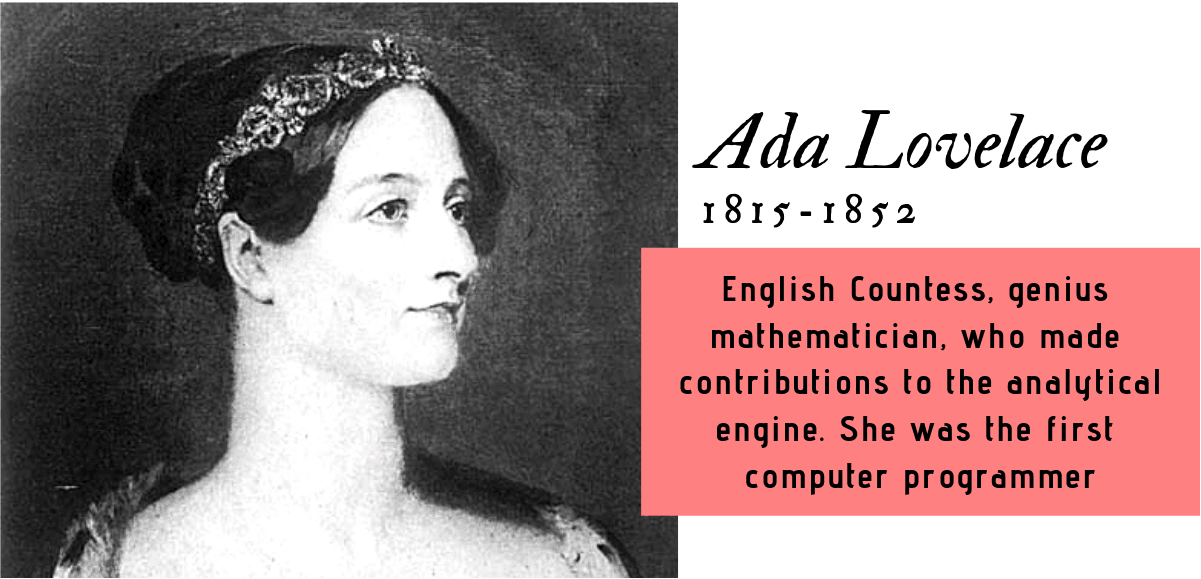
In a time when there wasn’t even common electricity, a young mathematical genius helped develop the analytics that would become key to computer programming. Not only that, her mother was the one that encouraged her to pursue mathematical endeavors. All this happened at a time when women really didn’t become involved with such mindful things. But did – and she did it with an amazing passion for understanding numbers.
Ada’s love for numbers came from her mother. Ada was the daughter of Lord Byron, an amazing poet but a philandering, abusive husband. Only days after Ada’s birth, her mother was told to leave the Byron home with the child. Annabella, her mother, wanted her daughter to avoid the moodiness and romantic ideals of her poet father. She introduced young Ada to mathematics and logic, developing a strong course work for her. The young girl took to numbers with a passion that followed her throughout her life.
At 17, Ada met and worked with Charles Babbage, the inventor of the “difference engine,” a large calculation machine that was the precursor to computers. Her own notes, applications, and ideas on improving the algorithms were so advanced it took a century for the technology to catch up where it could be applied. She is indeed an amazing woman of tech and woman in history.
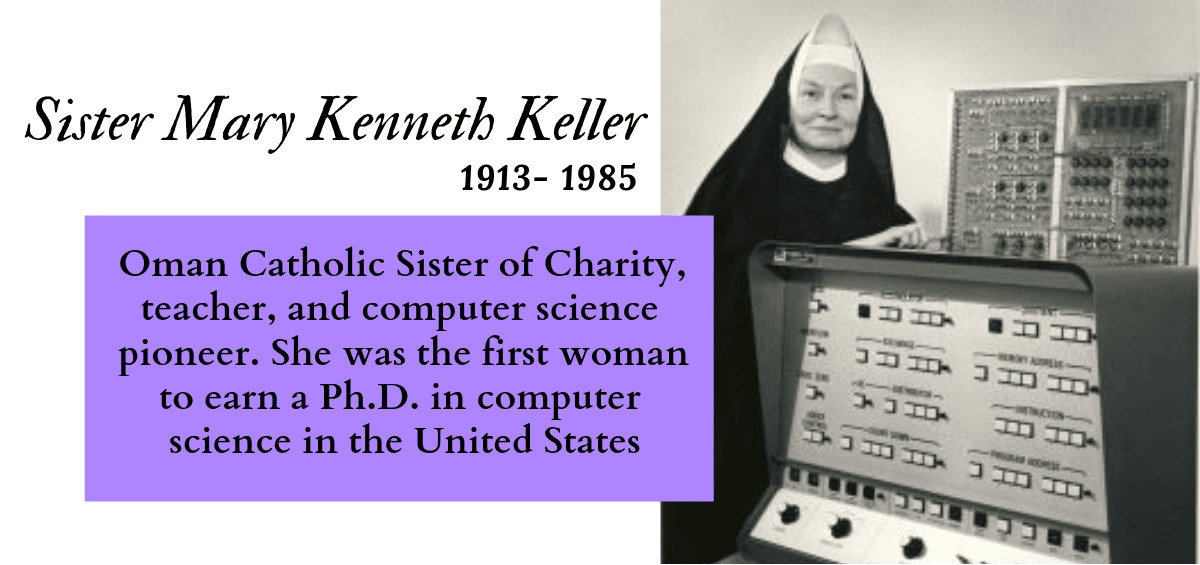
Today, a Ph.D. in computer science is not uncommon. Did you know that the very first person to earn this degree was not only a woman, but a nun? took her vows into the Oman Catholic Sisters of Charity in 1940. Her passion was not only for Catholic service, she was also an avid student. She received her Bachelor’s in Mathematics, and her Masters in Math and Physics. In 1965, she earned her Ph.D. in Computer Science. From there, she went on to help develop BASIC, a standard of computer programming languages that brought the ability to program to a broader base.
Sister Mary Kenneth was also a teacher. She had such a passion for computers and their potential to help students learn. She established the Computer Science Department at Clarke College in Iowa. She is not only an outstanding woman in technology; she is an amazing woman in history.
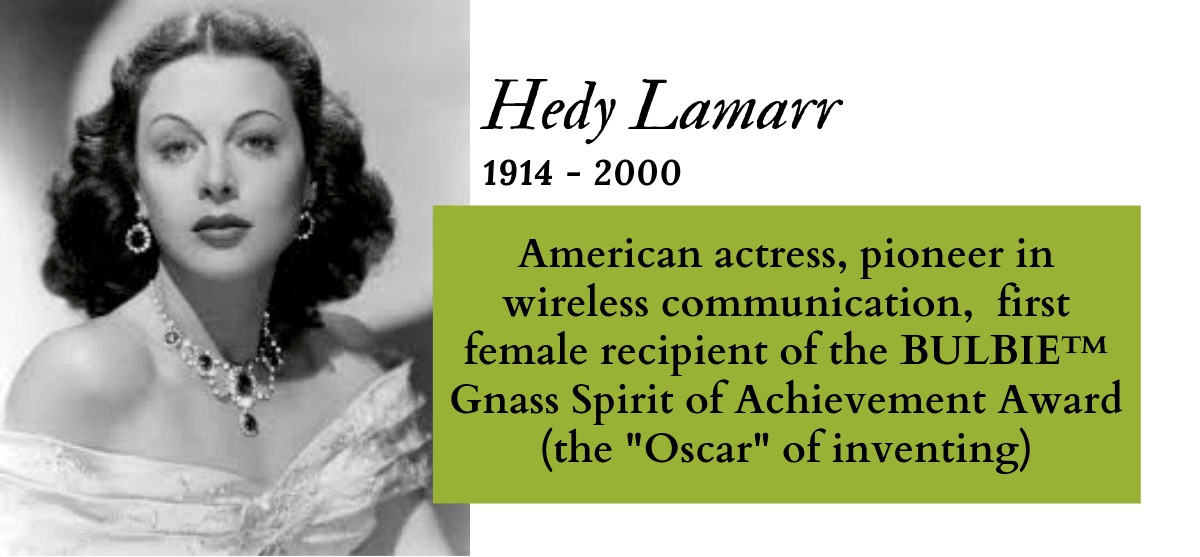
was an American actress in the 1940’s and ’50’s. She was considered to be one of the most beautiful women and had a stunning presence on film. But she was so much more than just a glamorous woman.
Along with George Antheil, Hedy developed a “Secret Communications System” with the purpose of deceiving the Nazi’s in World War II. Their code manipulated radio frequencies at irregular intervals between transmission and reception. It prevented classified messages and information from being understood by the enemy. But its value was even more expansive than just military use, although its full potential wasn’t realized until later. The system she helped develop became the very backbone of wireless communication. If you’re reading this on your cell phone or tablet – you can thank the lovely and brilliant film star – Hedy Lamarr. A true woman of technology and history.
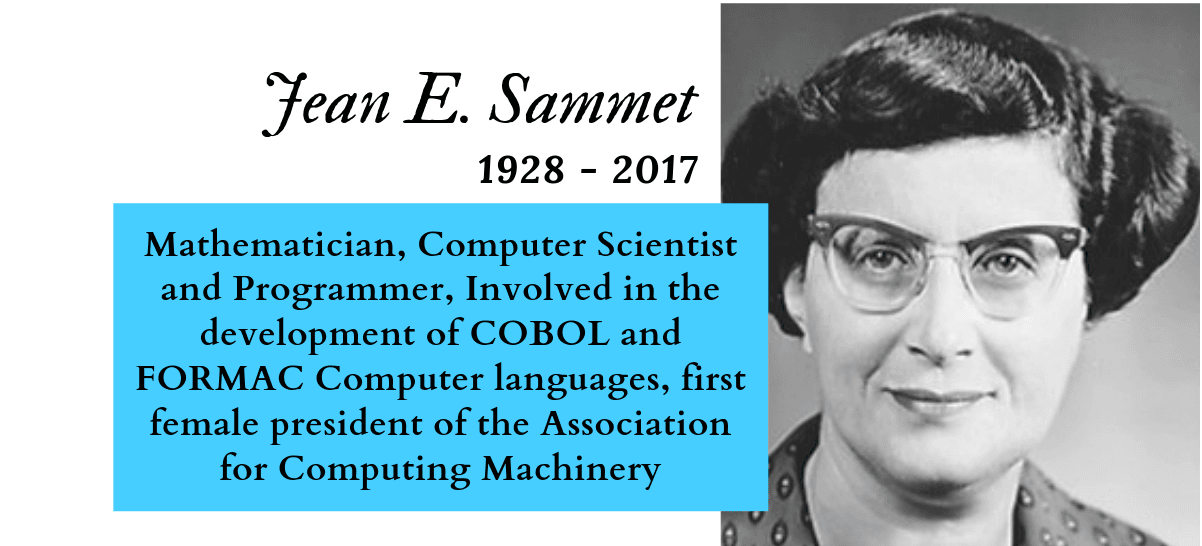
Jean Sammet always liked mathematics, but not necessarily computers. While taking her Ph.D. courses in mathematics at the University of Illinois in the late ’40s, she was introduced to a these new machines called computers. She didn’t particularly like it.
After graduating, she had difficulty finding a job as a teacher in New York or New Jersey, where she lived. She began working as an actuary trainee at Metropolitan Life Insurance. As a requirement of her position, she was introduced to punch cards, the early input system for computers. This time was different than her scholarly introduction. Suddenly, she had found her calling with computers.
After moving to a new job at Sperry, she worked on the programming team that developed COBOL, (Common Business Oriented Language), a program that handles not just numbers, but also business data. Although other computer languages have risen up, billions of lines of COBOL coding still run businesses, institutions, and organizations around the world. It is a language that helped frame the very existence and common use of computers today, and helped make Jean one of the inspiring Women of Tech.

As with many women, Anita Borg didn’t intend to become a computer programmer. She loved math. Necessity being the mother of inspiration, she taught herself to program while working at a small insurance company. That inspired her to go on and get a PhD in Computer Science from NYU, with research investigating the synchronization efficiency of operating systems.
Her skills took her to several companies over the years. She built a fault tolerant Unix-based operating system, worked in R&D where she developed and patented a method for generating complete address traces for analyzing and designing high-speed memory systems, and an email and Web-based system for communicating in virtual communities.
She received numerous awards for her work as well as her active pursuit of bringing more women into technology: the Heinz Award for Technology, Excellence in Education Award from NOW, Girl Scouts of America Juliet Gordon Low Award, the Augusta Ada Lovelace Award from the Association of Women in Computing, and more.
But her greatest passion was for finding ways to draw more women into the technology field and to help them to connect with each other. The organizations she founded (Systers, Institute for Women and Technology, etc.) continue to expand on her mission. Her inspiration continues to draw women together to build on and share their passion for tech.
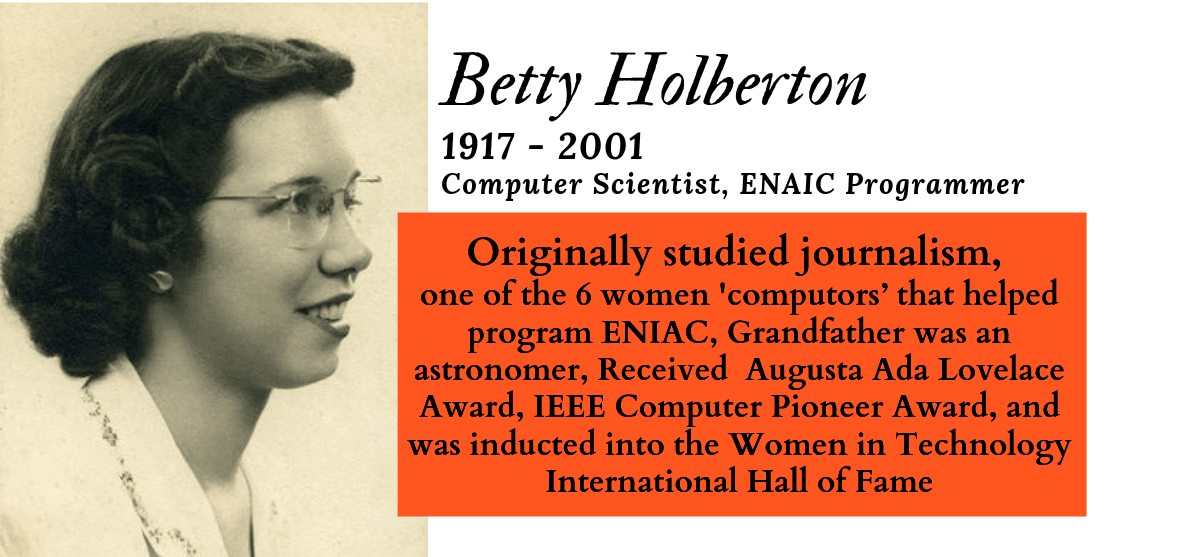
Believe it or not, there was once a time when it wasn’t totally unexpected for a professor to tell a female student that she would be better off at home raising children. It might have been considered a bit rude, but in the 1940’s it was almost expected that’s what a woman would do. Luckily, Betty Snyder Holberton decided to ignore that advice and continue with her schooling.
During the WWII, Betty was one of the women recruited to be a “computer” to calculate ballistic trajectories for the military. Most of the men were away in the war, and it was up to the women to rise to the challenge. And rise they did. While working on these complex differential calculations, Betty and 5 other women were chosen to work on an experimental new invention, the Electronic Numerical Integrator and Computer (ENIAC). It was the first digital computer. And it was programmed by women.
Betty went on to also help develop UNIVAC, FORTRAN, COBOL, BINAC, DEC’s PDP-8 minicomputers, and more throughout her career. She said she had a knack for computers and spent half her time trying to figure out what people needed in computers, and the other half convincing an engineer it was his idea, so the work would be done. We’re glad Betty stayed with programming and helped lead the way for other women in the technology field.
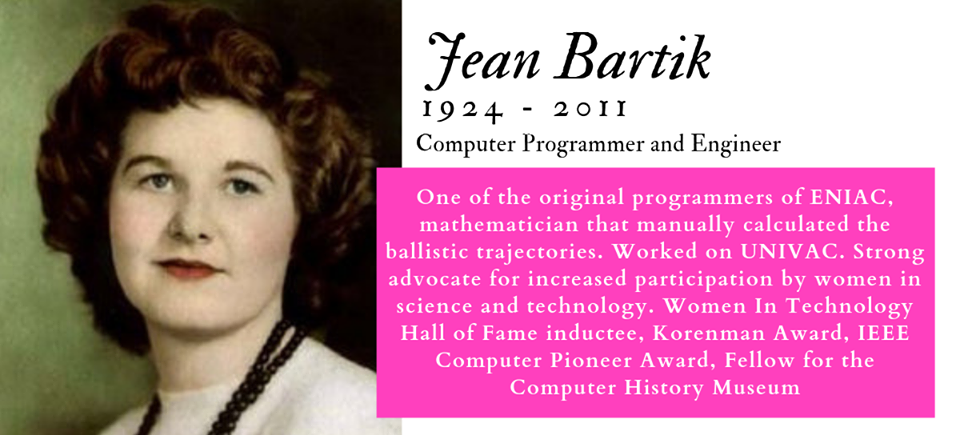
Jean Jennings Bartik served as one of the women “human computers” that helped develop the ENIAC computer – the first of its kind. As with most of the women, she started as a mathematician and became a part of history. After the stunning debut of ENIAC, Betty (as she was called then) continued to work with the Army. She was asked to form and lead a group of programmers to convert the ENIAC into a stored program computer system. She was also a key designer of the UNIVAC’s logic circuits.
Even with this amazing work at the birth of a new technology and field, Jean left computing after the birth of her first of three children. But she continued to learn. She received a Masters from the University of Pennsylvania. She returned to the field writing and editing technical reports on microcomputers. Jean worked at a number of positions as a manager, writer, and engineer, and became an honored speaker at technology events. Jean was a particularly strong advocate of women pursuing technology field positions. Jean Bartik often said, “”If my life has proved anything, it is that women (and girls) should never be afraid to take risks and try new things.” And that’s why she is a true Woman in Technology History.
Aren’t these Women in Tech History amazing? Who else do you think we should spotlight? What other Women in Tech (historic or current) inspire you? Let us know!


 contact@shetek.net
contact@shetek.net 

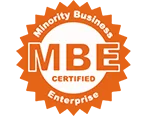
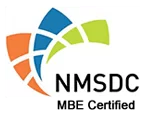


Blog comment section